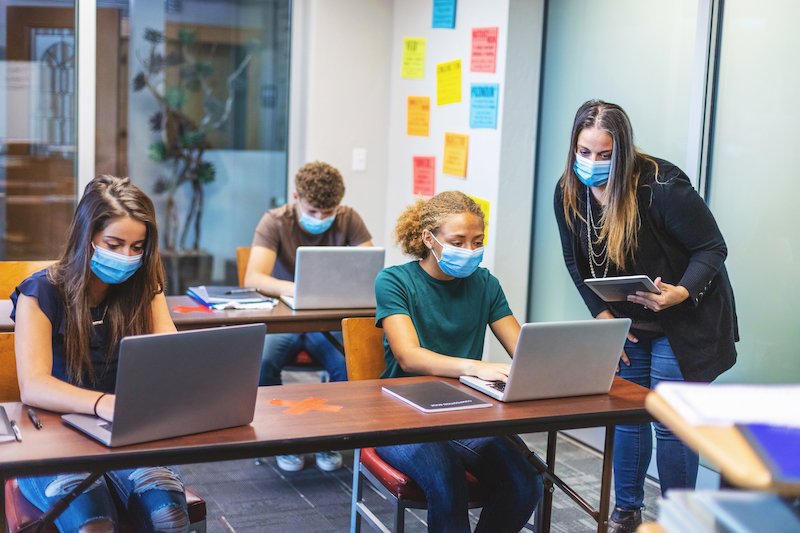During the COVID-19 pandemic, our classrooms and the dynamics between teachers and students underwent a 180-degree transformation. The use of traditional classrooms had been mostly replaced by Zoom, Google Meet, and other applications.
Communication in classrooms was disrupted by the “new normal” brought about by social media platforms due to a number of issues, including unstable internet connections, malfunctioning devices, etc. Students were barely paying attention, usually surfing social media or nodding off while still logged into their class lectures – all to maintain perfect attendance records. When a certain environmental gap exists in communication, it hinders the process – a gap brought about by the lockdowns during pandemic.
The majority of students have no idea how to interact with their teachers during in-person classes. Students and teachers have little in common, especially for those who originally began their lessons in virtual classrooms. The faculty may feel motivated to keep up their efforts if students reciprocate properly. Having been on both sides of the coin, I have come up with a list of things that can be done to improve classroom communication with teachers effectively in a post-pandemic setting.
How do we rectify this at present?
Naturally, being present in the classroom—mentally as much as physically—is the first step in establishing a connection. Browsing social media while listening to a lecture is akin to trying to explain something to our friends while they are either preoccupied with their phones or hardly following. Given that we’ve all done it throughout online lectures, it would be difficult to break this pattern. The effects are more worse in the classroom because faculty won’t find a reason to expend any effort if they see that their time is being undervalued. Therefore, it is better to put our phones away or at least switch them to silent mode during class to avoid mysteriously disappearing or missing out on emergencies.
In order to communicate better, it’s important to know what is expected of the student, and also learn the classroom decorum for communication. On their first day, some teachers create ground rules for the classroom decorum and other criteria. It may differ from person to person, as one teacher may authorize follow-up queries by email, whilst another may prefer face-to-face conversations; we need to observe, comprehend and remember them. If teachers do not specify rules, go ahead and ask them.
We often hear about shortened attention spans these days. Per the Kent University research, students have shorter attention spans and lower concentration levels when taking online classes because they are more susceptible to distractions during virtual classes; another factor contributing to the reduced attention span was a failure to take notes. Students might simply record lectures and listen to them “later,” which is rarely done.
Pro-tip: take notes- yes, the old school way. There’s no need for extravagant YouTube Tutorials for this, because there’s no correct way to do this. When we focus on the lecture to note down what might be useful, we are less inclined to go through our phones and solely concentrate on what’s being said.
Lectures are the most fundamental kind of classroom communication between teachers and students. Lectures may weave pointless conversations or impart something else to pupils if lecturers are not well-versed in what they teach; this is why they spend hours preparing, developing slides, and so on. It works both ways. Students have inquisitive minds, and they will ask questions during class. Sometimes, however, preparing ahead for classes might be helpful, at least ones that we know may need extra attention. In class, teachers frequently use examples or events to clarify a concept. However, without prior understanding, students may become distracted by examples and lose track of the lesson.
Lessons are sometimes used to cure academic bugs. When will doctors be able to provide us with the greatest treatments? When they fully comprehend our plight. So, in order for teachers to assist us, we must approach them. Reaching out to the teachers after class hours can help us overcome our fear of raising our hands in class. The more a student interacts with teachers, the more trust they can develop and their learning capacities will enhance. It’s useful to keep track of teachers’ appointment times and, if possible, seek a digital medium of communication.
Finally…
Communication between teachers and students is difficult and varies by culture. I’m referring to the complexities of teacher-student communication. When we factor in a post-pandemic environment, the complications multiply. Even if we follow all of the rules, something could go wrong. So, when communicating with teachers, it’s better to try to be sensitive and mindful of all the tips mentioned above.
